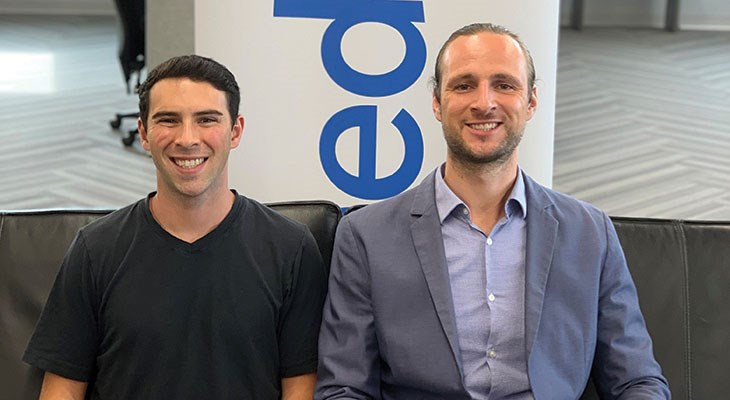Nathan Spoden and Matt Buder Shapiro have taken a humble yet confident approach to building MedPilot.
“Nate and I are very proud of what we’ve done, but we know that we’re going into these meetings with potential investors with a young company and as first-time entrepreneurs that don’t have a proven track record,” Buder Shapiro says. “We’re not walking in the door and starting from scratch. We’re starting from behind the start line.”
Spoden, Buder Shapiro and Jacob Myers launched MedPilot to empower patients with tools that provide more control over their medical expenses. They believe a lack of engagement, communication and financial options are the cause of many of the issues that lead to nonpayment, and ultimately, debt collectors.
The trick is proving that their business model works.
“Sales is really what makes or breaks every business,” Spoden says. “You can have a great team, you can have a great product. But sales and the strategy behind it all become the main factors in deciding if something is viable.”
Smart Business Dealmakers spoke with Spoden and Buder Shapiro about their journey to create a platform that takes the stress out of medical billing for both health care providers and patients.
Prove out your plan
Strong personalities that lack both depth and substance will typically not get you very far with potential investors, Buder Shapiro says.
“There are entrepreneurs who think they are just going to show up at the door of some venture capital firm and get cash because they’ve got a cool idea,” Buder Shapiro says. “I’m not going to say we weren’t optimistic and hoping that might happen. But we learned that we had to tell them what we were going to do and then go do it and then go tell them that we did it. Even though we were first-time entrepreneurs and young, that process enabled us to raise money from Plug and Play, Techstars, Cedars-Sinai Medical Center and Valley Growth Ventures, as well as incredible local investors like Jon Pinney and Chantel Moody.”
Details matter in an industry like health care, where you’re often meeting with people who aren’t big on change.
“We are cognizant that we’re dealing with a lot of people who have been around the block for a while, and they’re not always into new ideas,” Buder Shapiro says. “A big challenge that we faced was convincing decision makers — whether they are investors or large hospital executives — to trust us. It’s more than just a really good marketing presentation. It’s setting actual goals that we think we can accomplish and showing them that. Especially on the fundraising side, we were able to show investors that typically stay away from first-time entrepreneurs for many good reasons that we could back up what we were talking about.”
MedPilot has helped more than 650,000 patients to date and manages over $2 billion of patient receivables for its clients. The company was founded in New York but has found a home and strong support since moving its operations to Cleveland.
“Part of being a successful entrepreneur is having an optimistic attitude and not letting those first few investor conversations, or any investor or sales conversation that goes sour, deter you from the optimism or the goal of creating a successful business,” Spoden says.
Set realistic expectations
You want to make the best decision for your company and set realistic expectations. And that desire often leaves you balancing practicality against the need to make your company as attractive as it can be to would-be investors, Spoden says.
“It’s not to say you will do something that is unrealistic,” he says. “What do you need in place to achieve realistic revenue and growth figures to get to a point where investors look at your business and think it makes sense? If you say one salesperson is going to equate to $1 billion, that’s a stretch. If you say one salesperson is going to equate to 10 deals that equate to $100,000, maybe that's a little bit more realistic.”
He says entrepreneurs are going through that balancing act of trying to determine what can be achieved short term and what can be achieved long term, then setting up all of this to align with fundraising.
“So if I’m fundraising and bringing on $1 million, I need to know exactly how I’m spending that money, the size of my team and what that team is going to convert into revenue,” says Spoden. “Then, what is the cost of that team and the infrastructure to run that team so that I know how long that money is going to last. I’m hoping for the best-case scenario, but trying to cover myself by projecting what a more conservative scenario would look like, as well.”




